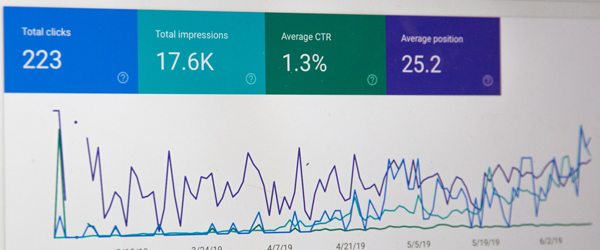It will be an understatement if I say the SEO has changed a lot over these past years.
We often see multiple updates per year from Google.
It requires a close eye, commitment, and hard work to follow these updates and make SEO work for you. SEO is a long term strategy, it requires constant evaluation, testing, and reworking if it’s going to be effective.
Even though the world of search engine optimization is complex and ever-changing the core concepts of organic search today are largely the same as it has been for the last decade: content and links.
In this article, I would like to show you how simple the first principles of SEO are and share a simple framework Zapier used to cut through the noise around SEO to generate 1.7 M organic visitors per month.
If you’re just starting with SEO, check out this beginner’s guide by Moz or this article about 5 elements you need to optimize to get started with SEO.
What’s an SEO Strategy?
Brian from Backlinko, explains the SEO (Search Engine Optimization) strategy as the process of planning, outlining, and implementing steps designed to improve search engine rankings.
In other words, the process you follow when you want to get more organic traffic from search engines.
Bear in mind that, SEO strategy and implementation is a vast and highly specialized area where usually you need to concentrate on three distinct types of SEO
- On-page SEO: The SEO focuses on optimizing content ‘on the page’ to boost the website’s rankings for specific keywords.
- Off-page SEO: The SEO focuses on the links that are directed to your website from other places on the internet.
- Technical SEO: The SEO focuses on the architecture of the website and how each web page is ‘technically’ set up to favor the website’s search engine ranking.
This is an oversimplified version of Zapier’s SEO strategy which you can steal to attract more organic visitors and cut through the noise around SEO.
Isn’t SEO Too Technical For Me?
One of the most misconceptions about SEO is that it’s all about technical stuff.
Statements like SEO are both an art and science that makes it difficult to understand portrays SEO as too complex to explain.
SEO is data-driven. Yes, there is a multitude of signals from on-page, off-page, and technical SEO that can conflict with each other. But since SEO is so data-driven, even complex problems can be broken down into small, manageable data blocks to be analyzed and explained.
While I agree that there are some technical fundamentals we need to be considered to be successful in search engine optimization, in order to truly win at SEO, you have to put your users first.
This means creating extraordinary content that helps your users and building a website that speaks to them and is easy for them to navigate.
Smarter Search Engines
Search engines are getting smarter over time. They’re no longer looking at searches on the basis of keywords, they’re looking at the intent behind the search and understand some searches have the same intent.
With this search intent behavior, we no longer have to build pages for each keyword. Instead, focus on pages based on topics.
This is one of the reasons why pages with longer content tend to rank higher – there’s a good chance that these pages will fully explain the questions the user has.
In short, the best way to rank in Google now is to become an authority in your niche.
Understanding Your Users
Understanding your users and their customer journey is where most of the time your SEO strategy gets intricate.
Many people go wrong when they focus on assuming that everybody knows about their product or service and the users know what they want.
But in most cases, the users don’t know or realize that they have a problem for which they need to find a solution. That solution being your product or service.
You have to figure out how you can reach them and help them solve their problem.
Zapier’s SEO Strategy
Zapier is one of my favorite tools that helps me connect my apps and automate my workflow.
Their website has an average of 1.7 million organic visitors per month.
This is traffic they’re not paying for. This is traffic showing up every month without them having to do anything specific except, continuing to do what they’re currently doing. It’s people showing up to the articles they’ve written years ago.
This makes them an incredible example of how you can use SEO to sell your product and help people discover it.
Since they’re an automation tool, you might think that they are ranking for keywords like automation, automate workflows, automate web apps like that. But even though that’s what they do, they are not the main keywords they rank for.
If we look at the top pages Zapier ranks for they are related to URL shorteners, calendar apps, scheduling apps, and different kinds of productivity apps.
These are the terms that people are searching that Zapier has written about, which brings people to Zapier’s site.
You may be wondering – well, those people are not searching for Zapier’s solutions, they are just looking for the best calendar apps. So why would this be valuable for Zapier?
This is where Zapier nailed their SEO strategy and understanding their customers.
Their SEO strategy, in a nutshell, can be summarized as the following;
- Find your customers problems
- Answer their questions about those problems
- Introduce your product as a better solution to their problem
When you search for ‘best calendar apps’ on Google, the first result is Zapier’s article. When you look at it they’ve written an amazing in-depth article about the 10 best calendar apps of 2020.
So far, it really has nothing to do with Zapier. Someone searches for best calendar apps and Zapier ranks for #1 for that search term attracting the lion share of traffic from Google.
They found out their customers’ problems and answered their questions about that particular problem.
This is where the third part of the SEO strategy comes in.
At the end of the article, Zapier lists zaps related to that application. In this case, they show these 3 zaps which help you automate your calendar.
For those who are not familiar with Zapier; A zap is basically an automated task that you want to run over and over again between two online apps
By the time a visitor reaches the end of their article, Zapier has extensively answered the question the visitor has and solved their problem. Then they introduced their product as a better solution to the visitors’ problems.
Here they’re solving problems that visitors don’t even realize he has.
How Can You Implement This Strategy?
So far, we’ve understood how Zapier’s SEO strategy has been generating traffic for them. Now let’s see how you can use a similar strategy for your business.
You have this core idea, a service that solves a particular problem for a particular customer.
Think about what other problems you can help to solve with your service. How you can create content that answers other questions these people will have.
This is going to give you a clear road map to find those customer problems and answers to the questions. Then finally introduce your service as the best solution to those problems.
Using this strategy, your visitors are naturally going from being curious about one problem they have to learning more about that problem and to see how your service helps them to solve the problem they originally had.
If you’re a productivity coach, you are obviously writing about productivity. But using this strategy you can also write about motivation, fitness, sleep patterns, healthy diet, time management, and habits. Write about anything and everything someone with productivity issues will also have.
The strategy only gets you so far, you could make this list of problems and you could never really do anything with it. The execution is really the meat of it and the long boring part.
The strategy is only going to take 1% of your time and the rest of 99% is execution.
When it comes to SEO execution, we usually tend to overcomplicate the process.
A simple version of this execution can be reduced to 3 steps
- Create great content
- Publish it consistently
- Increase the authority of your site
Most of the people overlook the final step in this execution. No matter how good your content is and how consistently you publish, you’re unlikely to rank for these keywords if Google doesn’t see your site as good authority.
Conclusion
This strategy is a proven framework to cut through the noise around SEO and helps you understand how simple the first principles of SEO are. Your strategy alone won’t get you anywhere but you need a good strategy for your execution to work.
Remember, SEO Strategy x SEO Execution = Traffic from Google
Everyone’s SEO goal is the same – to rank for keywords that drive traffic and revenue.
With this strategy, you’re not buying ads, you’re not doing aggressive sales funnels, you’re just naturally transitioning people asking a question and finding your product as the answer.
Want Quality Leads On Autopilot?
Build and automate your first lead generation funnel without any costs. Get my free 5-day lead generation on autopilot course via email.


